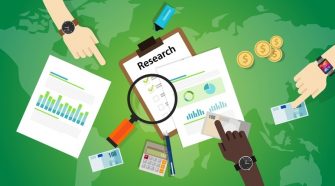At the end of 2019, Calm launched a workplace wellness service.
Little did the Calm Business team know that mental health, labor and the inextricable relationship between the two would be transformed forever by the COVID-19 pandemic. The goal, Chief People Officer Scott Domann told HR Dive over email, was to simply “help organizations build cultures with mental health at the center.”
In 2020, engagement with Calm Business skyrocketed “as the pandemic unveiled the need for mental health support at work,” Domann said. Now, more than 3,000 organizations have signed up for Calm’s services.
Part and parcel of sustaining a viable mental health resource for employers is cultivating that holistic culture in house, too, Calm said.
How Calm introduces calm, internally and externally
Calm’s benefits offering addresses “the totality” of workplace wellness, Domann said. Daily meditation time is blocked off on every employee’s calendar. Calm offers its employees time blocks or entire days that are designated Zoom-free.
“During companywide meetings, we always kick off with our most popular content series, ‘The Daily Calm,’ so we can all pause for a moment of mindfulness before diving into the workday,” Domann said. The company also implements staffwide mental health days and weeks, he added, giving his staff “the space to disconnect from work and take a collective deep breath.”
And finally, like many companies upping their employee compensation in the name of improved workplace mental health, Calm offers monthly wellness stipends.
“It’s important to us to create a resilient and collaborative environment where not only the business thrives, but employees do as well,” Domann said of these decisions.
A solid case study comes in the form of Ogilvy. Striking up a partnership in fall 2021, Ogilvy deployed the Mindful Manager training program. Erika Sheridan, Ogilvy’s North American associate director of people experience, and her team paired up with Calm’s talent development department and curated a four-week “playlist” of Calm meditations focused on leadership. Each week’s theme held specific relevance to the leaders in the workplace, with seven daily meditations touching on that theme, she said. The partnership also fostered weekly discussions among Ogilvy managers.
Data analysis suggests the trainings made a difference: 60% of managers reported less “stress-related impairment” in their daily activities, with more than half saying they were “better able to regulate and reframe their emotions.” Most Ogilvy leaders also said they could now better understand their decision-making processes, and recognize their weaknesses and strengths therein.
Sheridan told HR Dive that shortly after the Mindful Manager program wrapped up, she received an email from an employee who had continued with their daily meditations.
“They wrote to me and said, ‘One of the things this did for me was get me to commit to being ready to work by 9 a.m. I had been lax in that area, and I was working until 6 or 7 at night to make up for my laziness in the morning.’ Because our program blocked off our employees’ calendars from 9:00 a.m. to 9:15 a.m. for meditation, that one small habit completely shifted her work schedule,” Sheridan said.
“Over time I would imagine this brings you less burnout (with less late-night work hours), more productivity, more energy and more focus,” she continued. “Those small changes go a long way.”
Creating proactive mental health support
As an HR professional, small, oft-invisible, but still meaningful changes are the fruits of this transformative labor, Sheridan explained.
“Often, I think we have these expectations that learning or well-being programs have to make an incredibly large and visible change in an employee’s life to have true impact,” Sheridan said. “However, I don’t always believe that to be true.” Shifting an employee’s habits for the better is still a “real impact,” she explained.
Offering additional actionable advice, Sheridan put it simply: “Don’t wait for bad things to happen.”
Supporting employee health, be it physical or mental, should not be a response to stress, she continued. “It is meant to be an everyday priority to ensure you are creating an environment that all can thrive in, despite the circumstances. It is healthy for your people and for your business. Create well-being programs or offerings that can be accessed year-round. Find ways to make them fun, creative and innovative that don’t feel like an outdated benefit but rather a new opportunity or perspective to bring into the workplace.”
Sometimes, mental health support is as simple as doing a well-being check-in before each team meeting. “Our people want to know we truly care and it is genuine,” she said. “That means we have to show we care around the clock. It’s too exhausting to truly commit yourself to your work if you don’t enjoy it and feel valued and respected [by] those you do it with.”















How Tech Transformed How We Hook Up—and Break Up